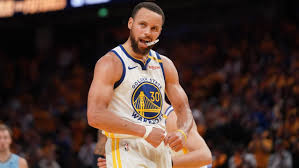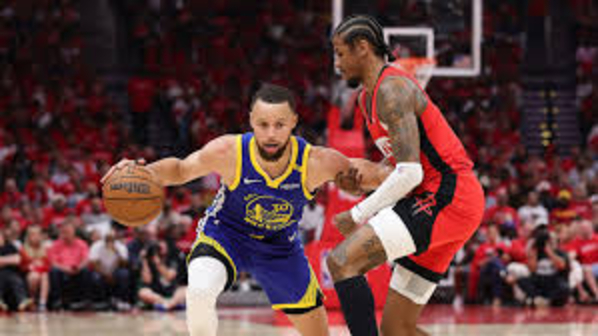Golden State Warriors: A Dynasty in Transition

The Golden State Warriors are one of the most iconic franchises in the NBA, known not only for their championship pedigree but also for revolutionizing the game of basketball. With a legacy steeped in innovation, teamwork, and resilience, the Warriors have captured the hearts of fans around the globe. From their early days in Philadelphia to their recent dynasty era led by Stephen Curry, the story of the Warriors is a testament to evolution, perseverance, and the pursuit of greatness.
The Rise of a Dynasty
The franchise was founded in 1946 as the Philadelphia Warriors, one of the original teams of the Basketball Association of America (BAA), which later became the NBA. After moving to San Francisco in 1962 and eventually becoming the Golden State Warriors in 1971, the team spent decades in relative obscurity, with only occasional playoff appearances and a lone title in 1975.
Everything changed in the 2010s.
In 2009, the Warriors drafted a baby-faced sharpshooter named Stephen Curry. It didn’t take long for Curry to prove he was more than just a shooter—he was a revolution in motion. His combination of handles, quick release, and seemingly limitless range redefined what was possible in basketball. Joined by Klay Thompson and Draymond Green, the “Splash Brothers” and the versatile big man formed the core of a new era.
Under head coach Steve Kerr, who took over in 2014, the Warriors adopted a fast-paced, unselfish brand of basketball that emphasized ball movement, three-point shooting, and defensive versatility. The results were immediate and historic.
Championship Glory

In the 2014–15 season, the Warriors won 67 games and went on to capture their first NBA championship in 40 years. Curry won his first MVP award, and the Warriors seemed poised for something even greater. The next season, they broke the regular season win-loss record by going 73–9—surpassing the 1995–96 Chicago Bulls’ legendary 72–10 record. However, they fell short in the NBA Finals, losing in a dramatic seven-game series to LeBron James and the Cleveland Cavaliers.
Rather than dwell on the loss, the Warriors made a bold move: signing Kevin Durant in free agency. The addition of the 2014 MVP made them nearly unbeatable. With Durant, the Warriors went on to win back-to-back titles in 2017 and 2018, and they appeared in five straight NBA Finals from 2015 to 2019.
Injuries and Rebuilding
Every dynasty eventually hits roadblocks. The Warriors’ run came to a halt in 2019 when injuries to Durant and Thompson derailed their championship hopes. Durant departed in free agency, and Curry suffered a broken hand early in the 2019–20 season. The team plummeted to the bottom of the standings, signaling a necessary rebuild.
However, unlike many franchises, the Warriors didn’t opt for a complete teardown. They developed young talent, made strategic draft picks, and stayed patient. Andrew Wiggins, once seen as a disappointment, flourished in Golden State’s system. The 2021–22 season saw the return of a healthy Curry, Thompson, and Green—and the result was yet another championship. Golden State defeated the Boston Celtics in the 2022 NBA Finals, giving the core trio their fourth title and reasserting their place in the league’s hierarchy.
The Present: Transition and Tension
As of 2025, the Warriors find themselves at a crossroads. Stephen Curry remains an elite player and arguably the greatest shooter in NBA history, but he’s also 37 years old. Draymond Green, while still a defensive mastermind, has seen a decline in athleticism. Klay Thompson’s return from injury has been commendable, but the consistency that defined his pre-injury years has faded.
There’s also internal pressure from the next generation. Players like Jonathan Kuminga and Moses Moody are developing well, and the team recently added more young talent through the draft. However, balancing the ambitions of aging stars with the development of new talent is no easy task.
The Warriors’ front office, led by General Manager Mike Dunleavy Jr., faces some difficult decisions. Should they double down on the remaining years of the Curry window by acquiring more veteran help, potentially sacrificing the future? Or should they shift towards a youth movement, even if it means saying goodbye to icons who transformed the franchise?
Off the Court: Culture and Community
One thing that sets the Warriors apart is their strong organizational culture. From ownership to coaching to players, the franchise has built a system based on trust, innovation, and mutual respect. The move to the Chase Center in San Francisco also symbolized a new chapter for the team—a modern facility that reflects their status as a premier sports brand.
Off the court, the Warriors are deeply engaged in community outreach. The Warriors Community Foundation supports youth education and wellness in the Bay Area, and players frequently participate in charitable events, clinics, and mentorship programs.
The team has also been a leader in embracing technology and analytics, working closely with Silicon Valley innovators to stay ahead of trends in sports science, data analysis, and fan engagement.
The Future: Unwritten but Promising
What’s next for the Golden State Warriors? The honest answer is: it depends.
If Curry continues to defy age and the supporting cast can stay healthy and consistent, another deep playoff run is possible. But even if the days of dominating the NBA are behind them, the Warriors’ future remains bright. With savvy leadership, a proven player development system, and one of the league’s most dedicated fan bases, the franchise is well-positioned to remain competitive for years to come.
The rise and potential resurgence of the Warriors isn’t just about wins and losses—it’s about identity. It’s about the evolution of basketball itself. And no matter what comes next, one thing is clear: the Golden State Warriors have already changed the game forever.

